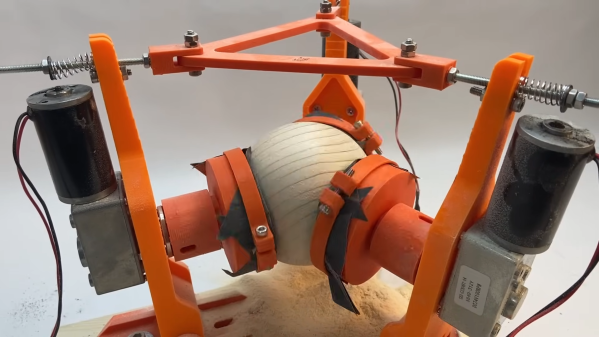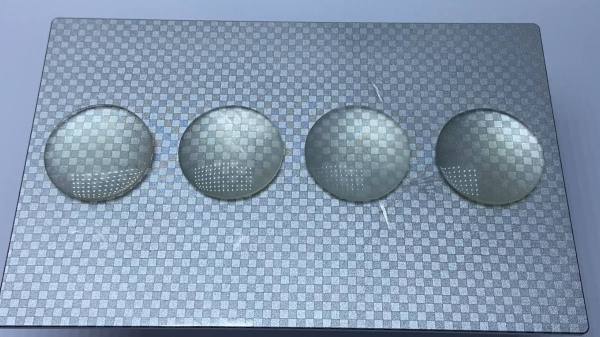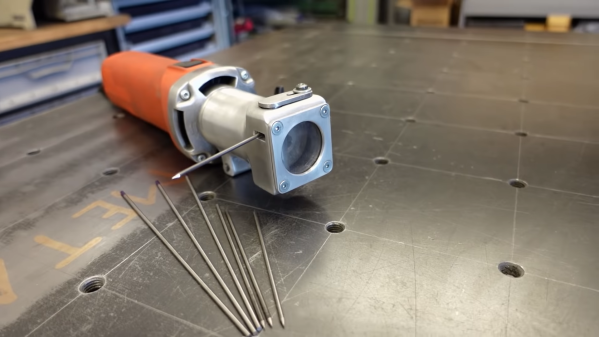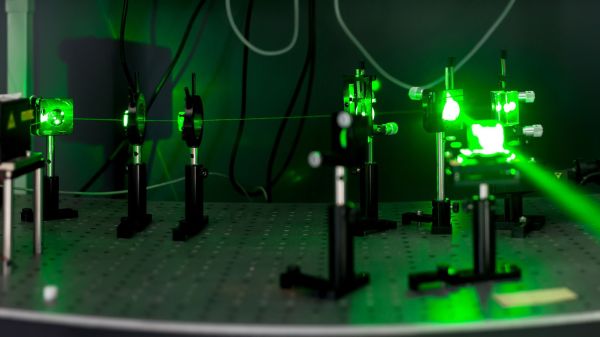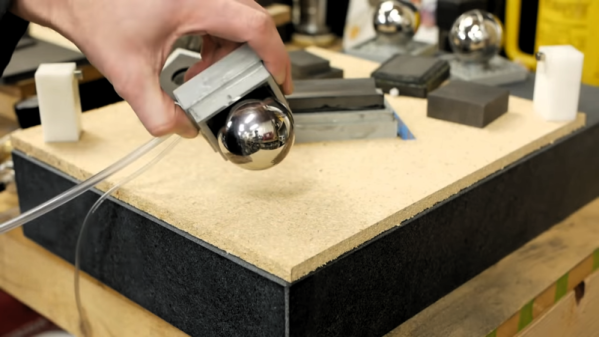Alright, everyone has 30 seconds to get all the jokes out of their system before we proceed with a look at this 3D printed wooden ball polisher.
Ready?
Theoretically, making a sphere out of any material should be easy. All you need to do is pick a point in space inside the material and eliminate everything more than a specified distance from that point. But in practice, sphere-making isn’t quite so simple. The machine [Fraens] presents in the video below is geared more toward the final polish than the initial forming, with a trio of gear motors set 120 degrees apart driving cup-shaped grinding pads.
Constant pressure on the developing sphere is maintained with a clever triangular frame with springs that pre-load the arms and pull them in toward the workpiece, but stop at the desired radius. The three grinding pads are fitted with sandpaper and constantly turn, wearing down the rough piece until it reaches the final diameter. The machine also supports more aggressive tooling, in the form of hole saws that really get to work on the rough blank. Check it out in the video below.
While we appreciate the fact that this is 3D printed, watching the vibrations it has to endure while the blank is still rough, not to mention all the dust and chips it creates, makes us think this machine might not stand up for long. So maybe letting this circular saw jig cut out a rough ball and using this machine for the final polish would be a good idea. Continue reading “Have A Ball With This 3D Printed Sphere-Making Machine”

